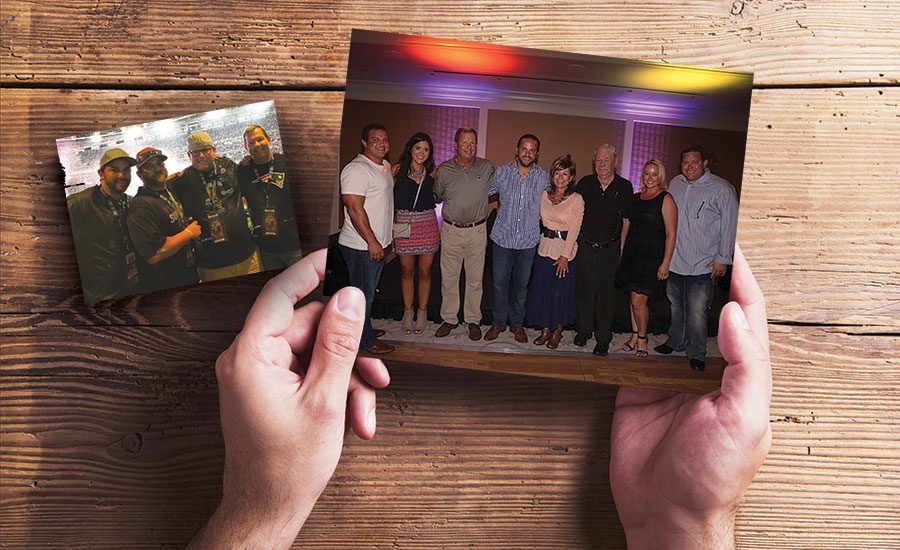Before we get into part four, we (Jacob and Les) wish to extend a special thanks to the members of Business Networks who have graciously shared their experiences. Thank you for making yourselves available for questions and the invaluable insight.
Here’s the final part in our series.
Hold regular family meetings
“The real challenge is creating an optimal balance of ownership, family, and management that fosters a positive family-business interaction though family communication and governance of the family-business system. Family meetings constitute the best forum for achieving and maintaining this optimal balance” (Poza, 2010, p. 272).
An important component of governance and also an excellent practice is to hold family business meetings. It is easy for families to be consumed by the day-to-day challenges of running the business, which often includes meetings that deal with the granular details of the business. Families that take time to meet to discuss the strategic direction of the business, big picture planning, and family dynamics are in a position of strength and are investing in something that can have a long-term sustainable impact. We recommend families take time to meet on a regular basis – at least once a month. It is a good practice to discuss the general details of the business related to strategy, revenues, profitability, and assets. It is best to avoid spending too much time on details related to specific projects or day-to-day challenges if they are not directly related to big picture items. Focus on big picture items and, most importantly, integrate opportunities for family members who work in the business and on the business to get to know one another better. Build relationships and learn as much as you can about each other. It is important to know, understand, and have a genuine interest in the goals, aspirations, and challenges that are important to members of the family.
Family meetings also provide a great opportunity to begin grooming younger family members who may want to work in the business some day. These meetings could provide a powerful tool for teaching younger family members how business decisions are made and the value of hard work. Some families prepare a theme for each of their meetings so that in addition to providing a general update on the business they also have the opportunity to develop an understanding of how the family makes valuable contributions to the community. For example, one meeting may address philanthropy and another may cover elements of effective public speaking. There is no one best way of structuring these details for family meetings; however, we do recommend that family members be included in the decision-making process when determining an approach. Again, the most important factors are that these meetings provide opportunities for family members to think strategically about the business and build relationships with one another.
Invest time in an industry peer network
“In Business Networks, you get to compare yourself to others and look at yourself in the mirror. You learn that you don’t always have to reinvent the wheel. We can follow the ideas of others and they can learn from us as well” (Piltch, 2012; cited in Cunningham, 2012, p. 3).
“Participating in an industry peer network allows companies to enhance their capabilities on a regular basis and achieve a better sense of their market position… [M]embers are actively encouraged to critique one another and ask searching questions that challenge one another’s assumptions… [This dynamic] promotes a deeper understanding of cause-and-effect relationships within companies and a more effective transfer of knowledge among companies” (Sgourev & Zuckerman, 2006).
“[U]nder the right circumstances, groups are remarkably intelligent, and are often smarter than the smartest people in them” (Surowiecki, 2004, p. XIII).
In 2004, James Surowiecki, a staff writer at The New Yorker, wrote The Wisdom of Crowds: Why the Many Are Smarter Than the Few. While his book was not about industry peer networks specifically, the fundamental principles that make the industry peer network process so valuable are rooted in what he calls the “wisdom of crowds.” “The argument of [his] book is that chasing the expert is a mistake, and a costly one at that. We should stop hunting and ask the crowd…” (Surowiecki, 2004, p. XV).
While insight and counsel from consultants can be of great value, it is also imperative to learn from those who are walking a similar path. Industry peer networks help members learn from the collective experience of their peers to address business challenges that are unique to their industry (Sgourev & Zuckerman, 2006). For years, an assumed best practice has been to chase the expert or group of experts (Surowiecki, 2004), but we now have strong evidence suggesting industry peer networks can also provide a powerful and highly effective mechanism for building a stronger business.
In practice, industry peer networks offer non-competing firms uninhibited access to their members to discuss the details of their businesses. Network members examine all aspects of their businesses in the company of peers to identify strengths, recognize opportunities for improvement, set goals, and practice a system of accountability. Not all network members have family business dynamics to deal with; however, many do and the real underlying value in the experience lies within taking a systematic approach to leveraging the collective wisdom of the group for addressing a wide range of complex business issues. The idea is that the collective wisdom of the group is a powerful tool and, if leveraged effectively, is capable of providing insight across a wide range of challenges that rivals the insight of any one of its individual members, including the experts (Surowiecki, 2004).
Summary
We argue that successful family-owned restoration firms are good for the economy and should thrive. They provide valuable services to the community, employ a thriving workforce, and support other local businesses, among other things. When relationships among family members are healthy, businesses are more profitable and better equipped to deal with adversity and manage challenges. These arguments, while good, should not be the foundational components from which an argument to preserve and cultivate healthy relationships among family members is developed.
A family should seek to build and preserve healthy relations among its members because of their value for one another. A thriving restoration firm should be one of the results of healthy family relationships not the reason for developing healthy relationships. Empty efforts do not have sustaining properties to endure the inevitable challenges that will emerge and are likely to fail as a result. Family members should have a genuine love and care for one another and treat each other with dignity and respect, regardless of the circumstances – even when holding each other accountable at work.
A Note from the Authors:
This is the four (and final) article of a four-part series on the importance of healthy family relationships within family-owned restoration firms. Part one (December) introduced the nature of family-owned businesses and discussed findings from a recent study that examined various dynamics of family-owned restoration firms. Part two (January) discussed the impact relational health has on firm performance and strategies for assessing relational development needs. Part three (February) introduced strategies for developing healthy family relationships. Part four (March) advances the conversation regarding strategies for developing healthy family relationships and ends on two vital strategies that have contributed greatly to the success of many family-owned restoration firms.





Report Abusive Comment